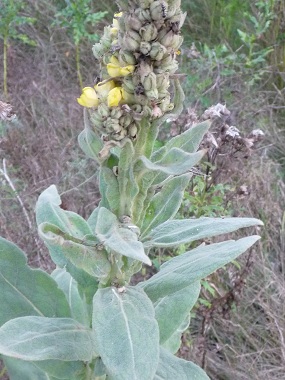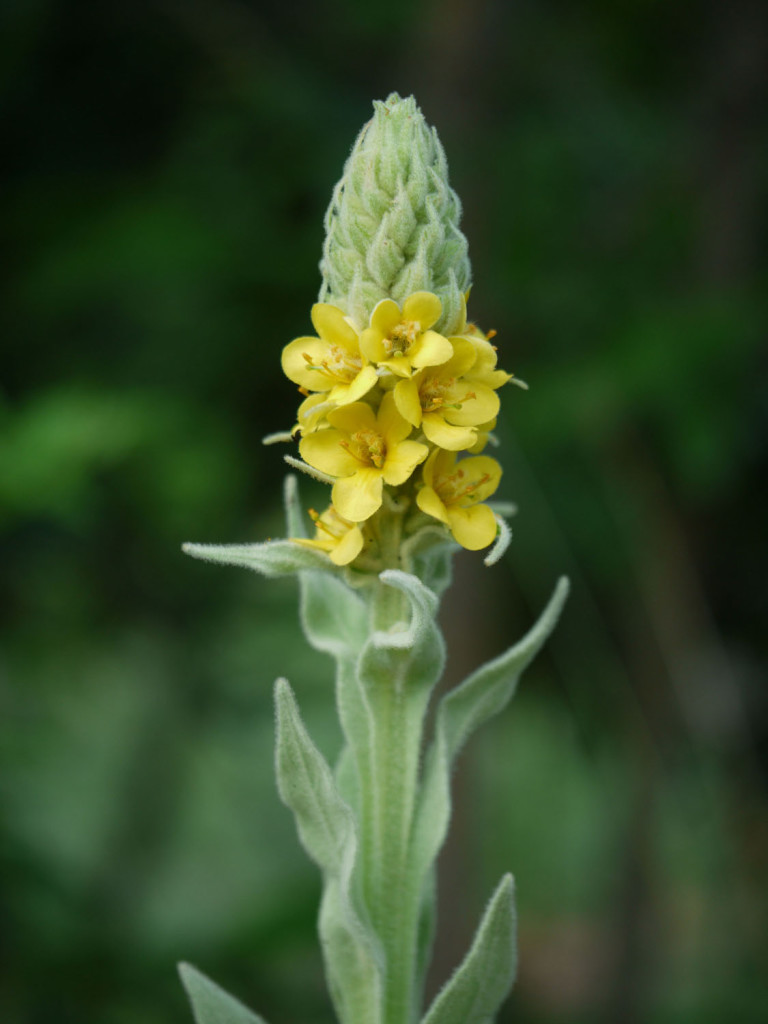


In fact, it was believed that wearing mullein would ensure fertility and also keep potentially dangerous animals at bay while trekking along in the wilderness. Its magical qualities were numerous, going way beyond simply warding off evil but also was thought to instill courage and health, provide protection, and to attract love. Mullein leaf, flower and root, with its litany of folk uses ranging from 'nature's toilet paper' to an effective apotropaic (fancy word meaning that which wards off evil spirits), have been used extensively in folk medicine. According to Maida Silverman in her book A City Herbal, " The great respect and love formerly accorded to mullein can be inferred from the number and variety of the folknames for it." The leaves were dried, rolled and used as wicks for candles and the entire dried flowering stalks were dipped in tallow and used for torches, hence the names 'candlewick plant' or 'torches'. It was used as a hair wash in ancient Roman times the leaf ash to darken hair, and the yellow flowers for lightening it. Collect the large basal leaves that are close to the ground at most any time of year, and collect flowers in the summer, mid-morning after dew has dried.ĭioscorides, a Greek physician pharmacologist and botanist, practicing in the 1st century in Rome, who authored the herbal De Materia Medica, was one of the first to recommend mulleins use in lung conditions around 2,000 years ago.
#MULLEIN LEAF FREE#
Mullein is weedy and thus widely available, the only major thing to consider is that harvesting is best in areas that are free of pollutants. Interestingly enough, often it improves soil, making it good enough for other plants to thrive, and then moves on and quits growing there. The deep root helps to help break up the soil and then when the leaves die, the dead foliage adds nutrients the soil. It is native to northern Africa, the Canary and Madeira Islands, many regions in Asia and Europe, and now widely naturalized throughout the world and growing as a weed in disturbed soils. blattaria, many of which can be used interchangeably. It has over 200 hundred species including V. Its generic name, Verbascum, is thought to be derived from the Latin word 'barbascum' with 'barba' meaning beard and referring to the hairy leaves. In the first year it appears as a basal rosette of leaves, and in the second year, it sends up huge flower spikes with many bright densely clustered yellow flowers which only open for one day.


Mullein is a biennial herbaceous member of the Scrophulariaceae family, bearing silvery green and extremely fuzzy leaves, and growing up to eight feet in height. Presently, mullein can be found at health food stores often prepared as soothing leaf tea or an ear oil made of the infused flowers. This gentle herb has been used extensively in European and North American folk medicine and thus has a plethora of folk tales associated with it. The silvery green leaves and bright yellow flowers of mullein have been utilized for thousands of years in herbal traditions.
#MULLEIN LEAF HOW TO#


 0 kommentar(er)
0 kommentar(er)
